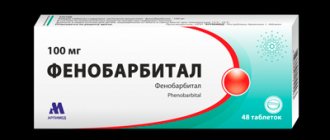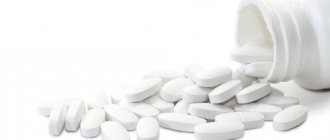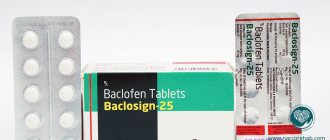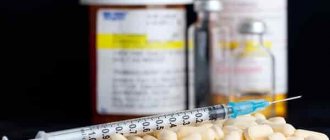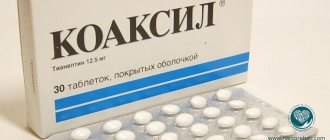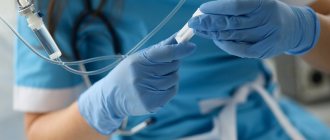In modern realities, more and more people are pathologically dependent on various synthetic drugs. The universal availability of these drugs only increases the risk of developing drug addiction. Some of the drugs sought by drug addicts are widely used in traditional medicine for the treatment and correction of various pathological conditions.
Pharmacodynamics
By reducing the excitability of the terminal sections of afferent sensory fibers and suppressing interneurons, it inhibits mono- and polysynaptic transmission of nerve impulses; reduces pre-tension of muscle spindles. Has no effect on neuromuscular transmission. For neurological diseases accompanied by spasticity of skeletal muscles, it weakens painful spasms and clonic convulsions; increases the range of motion in the joints, facilitates passive and active kinesitherapy (physical exercises, massage, manual therapy).
General information
Baclosan is the trade name for the muscle relaxant baclofen. It is a stimulator of GABA - gamma-aminobutyric acid, the presence of which determines the processes of excitation and inhibition in the tissues of the central nervous system. The substance is well absorbed in the lumen of the small intestine, from where it enters the bloodstream. Baklosan is excreted from the body in urine (mostly unchanged).
With its help, pathological conditions such as:
- reversible spasticity - spasm or involuntary muscle contraction;
- consequences of multiple sclerosis - a chronic autoimmune disease accompanied by damage to the myelin sheath of nerve fibers;
- residual effects that occur after various spinal cord lesions.
Baklosan treats spasticity, which is bothersome when:
- cerebrovascular disorders;
- traumatic brain injuries;
- spinal cord lesions;
- cerebral palsy - a group of brain pathologies that arise due to its underdevelopment or injury during pregnancy or childbirth and are manifested by motor, speech, and mental disorders.
The product is also used in complex therapy:
- alcoholic liver disease;
- alcohol addiction;
- trigeminal neuralgia;
- gastroesophageal reflux - a pathology in which the contents of the stomach are thrown into the esophagus.
Baklosan not only eliminates muscle spasm, but also:
- relieves muscle tension;
- worsens spinal reflexes - urination, defecation and others;
- reduces muscle pain.
Directions for use and doses
Inside, during meals. For adults, the initial dose is 5 mg (1/2 tablet of 10 mg each) 3 times a day. Every 3 days, the dose of the drug is gradually increased (usually to 30–75 mg per day) until the therapeutic effect occurs. Patients who require higher doses (75–100 mg per day) should take the drug in 25 mg tablets. For patients over 65 years of age, the dose of the drug should be increased with caution due to the increased risk of side effects. The maximum daily dose is 100 mg.
For children, the initial dose is 5 mg (1/2 tablet of 10 mg each) 3 times a day. If necessary, the dose can be increased every 3 days (with caution). Typically recommended doses: children aged 1 to 2 years - 10-20 mg per day, 2-6 years - 20-30 mg per day, 6-10 years - 30-60 mg per day. For children over 10 years of age, the maximum dose is 1.5–2 mg/kg body weight.
For what pathologies is Baklosan dangerous?
The drug used in a therapeutic dose has contraindications. If a drug addict is unable to refuse the drug being described, then he should at least understand for what pathologies Baklosan is contraindicated. This:
- Parkinson's disease is a degenerative lesion of nervous tissue that causes trembling of the arms and legs, stiffness, and slowness of movements;
- cerebrovascular insufficiency - a disorder of cerebral circulation due to vascular damage;
- persistent renal failure - deterioration of kidney function;
- atherosclerosis of cerebral vessels - deposition of cholesterol plaques on their inner surface;
- peptic ulcer of the stomach and duodenum - the formation of one or more deep defects in the wall of these organs.
Abstinence
Abstinence is associated with the development of physical dependence. This is a pathological condition that appears when you abruptly stop using the described drug. This happens if the product has been used for more than two months. Observed:
- hypermetabolism - an increase in energy expenditure that is not associated with mental or physical activity;
- muscle rigidity (stiffness);
- a sharp increase in temperature - more than 41 degrees Celsius.
In complex cases, disturbances in the functioning of internal organs may occur. Nausea, vomiting, abdominal pain, increased heart rate, and decreased blood pressure appear. Such symptoms disappear if the suffering addict takes the dose of the drug that he usually uses for its psychotropic effect.
How does the drug affect the body?
The use of the product has a significant impact on the functioning of the entire body, as well as on the human psyche. About an hour after taking the pills, a person begins to experience excessive activity, cheerfulness and other similar manifestations. The addict begins to feel a surge of energy, he gains additional strength, and his mood becomes better and better. Efficiency also increases, a certain thirst for activity arises, and there is no feeling of fatigue. It seems to a person that he can perform a large number of different tasks without needing rest. The condition persists for several hours after taking the drug.
Baklosan: side effects
Those who like to “expand consciousness” use the drug as a substitute for strong psychotropics:
- hallucinogens;
- sodium hydroxybutyrate.
Under its influence the following are observed:
- euphoria;
- improved mood;
- the feeling that problems don’t exist.
Such effects occur when Baklosan is present in the bloodstream - removal from the body leads to their weakening. With regular use of the drug in large quantities, various disorders occur. The most common mental and neurological disorders are:
- depression;
- hallucinations;
- nervous exhaustion;
- drowsiness;
- dizziness;
- convulsions.
Somatic disorders also appear. From the cardiovascular system, this is arterial hypotension (low blood pressure). From the gastrointestinal tract, nausea with vomiting, dry mouth, diarrhea or constipation are observed. Urinary retention and involuntary leakage of urine during sleep may be a concern.
Interaction with other tools
Baklosan enhances the pharmacological effect of ethyl alcohol and nootropic and psychotropic drugs. Also, when taken together with them, an increase in the activity of antihypertensive and anti-gout drugs was noted. Combined use with tricyclic antidepressants increases antispastic and sedative effects.
Amphetamine
The combination of Baclosan and amphetamine is a common mix among drug addicts. Amphetamine is a strong psychostimulant, a synthesized analogue of cocaine. The effect of the mix begins 30-60 minutes after taking it. Stimulating and exciting effects affect not only the psyche, but also the body as a whole. A person feels an unusual increase in general tone and mood, and an increased sexual desire - in both men and women - becomes a bonus to positive emotions.
The combination of drugs enhances euphoria and prolongs pleasant sensations, while the drugs correct the pharmacological effect of each other and mitigate the negative consequences of mutual use. The powerful narcotic potential achieved by taking Baklosan and amphetamine disappears after a few hours, leaving behind a residue in the form of depressive feelings and a sharp deterioration in mood. Both drugs quickly cause dependence with a severe withdrawal syndrome manifested by muscle atonia, convulsions, hallucinations and disturbances of consciousness.
Mephedrone
According to reviews of drug addicts who have tried the combination of Baklosan and mephedrone, the narcotic effect of the mix is significantly pronounced. Among those who use illegal substances, mephedrone is considered a cheaper analogue of amphetamine, cocaine and MDMA. Taking drugs together ends fatally, as do most cases of polydrug addiction, if the goal is to obtain a stronger euphoric effect compared to the previous time.
Drug intoxication is caused by intense stimulation of mental and physical activity, euphoria, hallucinations, and lack of critical thinking. After its completion, the intensity of withdrawal symptoms is several times greater than the withdrawal syndrome of self-administration of Baklosan. Severe withdrawal leaves the drug addict practically no chance of remission.
Alcohol
The instructions for use of Baklosan indicate that the drug should not be combined with ethyl alcohol. This is explained by the mechanism of action of the muscle relaxant - by exerting a depressant effect on the central nervous system, the drug increases the specific effect of alcohol. Such an undesirable combination can cause alcohol intoxication and coma. Such consequences are explained by the chemical incompatibility of the products, against the background of which the desired intoxication occurs when using increased doses of medication and alcohol.
Abroad, Baklosan is used as a means of combating withdrawal symptoms in the treatment of alcoholism and drug addiction. Successful relief of withdrawal symptoms and physical craving for ethanol often ends in the formation of a new addiction - baclofen. After leaving a rehabilitation center, many former alcoholics take Baclosan either alone or in combination with other drugs.
Non-medical use
Non-medical use of Baklosan in a dosage of 50-150 mg (the maximum recommended therapeutic dose per day is 30-100 mg) gives a pronounced antidepressant effect, against which the mood improves, complexes go away, and the level of anxiety decreases.
In most cases, severe drowsiness is noted. The listed effects of taking Baklosan, based on unusual experiences after the influence of psychoactive substances, are included in the definition of “psychedelic state” or the slang word “trip”. This condition lasts for a limited time - after about 10-14 hours, the narcotic effect of Baklosan wears off, severe depression sets in, and the need arises to continue taking the drug. Experienced drug addicts develop tolerance to the drug, so they take it in increased dosages, with alcohol or other psychostimulants and drugs, trying to enhance the effect of the “trip.”
When the dose of 150 mg is exceeded, the opposite effect is sometimes observed - instead of euphoria, a person experiences severe aggression and emotional stress. This condition, according to narcologists, develops against the background of inhibition of dopamine receptors. The combination of Baklosan with other drugs or alcoholic beverages often results in acute intoxication, coma and death of the addict.

